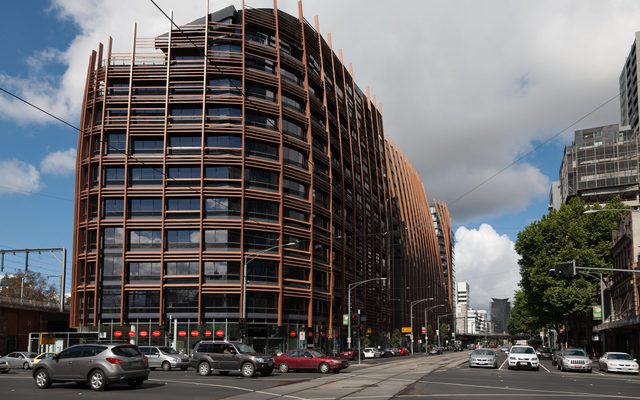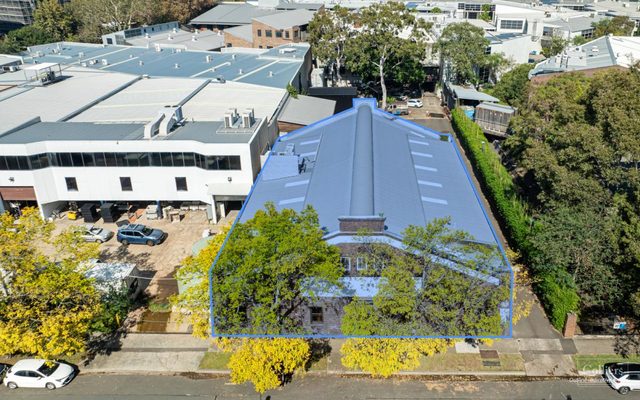This article is from the Australian Property Journal archive
THE national office vacancy rate improved marginally in six months to July, on the back of the strong performing Sydney and Melbourne markets, according to the Property Council.

/* Style Definitions */
table.MsoNormalTable
{mso-style-name:”Table Normal”;
mso-tstyle-rowband-size:0;
mso-tstyle-colband-size:0;
mso-style-noshow:yes;
mso-style-priority:99;
mso-style-qformat:yes;
mso-style-parent:”;
mso-padding-alt:0cm 5.4pt 0cm 5.4pt;
mso-para-margin:0cm;
mso-para-margin-bottom:.0001pt;
mso-pagination:widow-orphan;
font-size:10.0pt;
font-family:”Times New Roman”,”serif”;
mso-fareast-language:EN-US;}
The PCA`s latest Office Market Report show the national vacancy rate declined from 10.8% to 10.4%, however the results were mixed with the other capital cities lagging behind Melbourne and Sydney.
Demand for office space in Melbourne and Sydney CBDs was more than double historical averages in the six months to July 2015.
As a result the vacancy rate in Melbourne fell from 9.1% to 8.1% and Sydney declined from 7.4% to 6.3%.
On the other hand, the Perth vacancy rate continued to climb from 14.8% to 16.6% and is now the highest in Australia.
Brisbane CBD`s vacancy declined the first time in three years from 15.5% to 15%, although demand remained weak. Canberra`s vacancy dipped slightly from 15.4% to 15.3% whilst Adelaide remained unchanged at 13.5%.
PCA chief executive Ken Morrison said surging demand for office space in Sydney and Melbourne is one of the strongest signals yet that Australia’s transition from a mining investment dominated economy is taking hold.
“Office demand in the Sydney and Melbourne CBDs is double the historical average, driving office vacancies down and demonstrating that the non-mining service sector is growing.
“In another healthy sign, office vacancy rates actually fell in 17 of the 23 markets measured by this report,” he added.
“Capital city office markets seem to be separating into a three-speed reality, with strong demand in Sydney and Melbourne, weak demand and more supply to come in Brisbane and Perth, while Canberra and Adelaide hold their ground.
“This reality will have different implications for the market and for policy makers in each city,” he continued.
“More needs to be done to revitalise or re-purpose ageing product, particularly lower grade office stock, into new apartments, hotels and other uses. This means creating a business and taxation environment that encourages investment,” Morrison suggested.
JLL Australia`s head of office leasing Tim O’Connor said the number of contiguous options for A grade space reduced considerably in Sydney over the 2014/15 financial year and as a result, incentives have started to be pulled back and lower incentives will become a theme of the Sydney office market over the next 12 months.
“Improved tenant demand, an expectation of a recovery in effective rents and capitalisation rate compression are the catalysts for the next development cycle. Nevertheless, the lead time for development is typically 36 months and supply additions will be below trend over 2017 and 2018 across most CBD office markets,” he added.
O`Connor said the demand recovery in Sydney and Melbourne is also broadening, led by the technology sector, along with the retail banking services sector and the education sector.
“Furthermore, the displacement of tenant from assets with residential redevelopment potential will provide additional enquiry and activity across eastern seaboard office markets.
“While positive net absorption is a sign that businesses are expanding their footprint to accommodate headcount increases. We expect to see an increasing number of expansionary requirements and stronger demand from a broad range of industry sectors as we move through the 2015/16 financial year,” O`Connor predicted.
Worryingly for Brisbane and Perth, demand for space fell markedly and there is significant new supply due to arrive in both cities over the next two years.
According to the PCA, approximately 507,342 sqm of stock is due to be added in the second half of 2015 – – three times that delivered over the past six months and more than one and a half times the historical average. In 2016 a further 465,207 sqm is due to come online around Australia.
Morrison said Sydney and Melbourne are well placed to absorb new supply, whereas the new stock will pose a challenge in Perth and Brisbane.
Australian Property Journal



